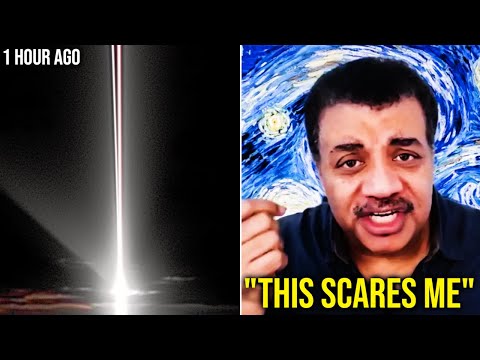
You Might Wanna Watch This Video Before Next Month.. with Neil deGrasse Tyson
Neil deGrasse Tyson has just unveiled that CERN has closed down and something weird is happening. Join us as we uncover the truth about what’s really going on at CERN and how these secret discoveries might just change the way we’ve looked at scientific research forever. While scientific research has been going on for centuries now, albeit in its own way, CERN has taken things to the next level. This particular facility was founded in 1954 and is located near Geneva, Switzerland, right at the border with France. Even though this facility gets up to a lot, one of CERN’s primary functions is to operate the world’s largest particle physics laboratory. It serves as a hub for international collaboration, bringing together scientists and researchers from around the globe to explore the fundamental structure of the universe. So you could say that at the core of CERN’s research are particle accelerators. They are colossal machines that propel particles to incredibly high speeds. These accelerators are designed to recreate the conditions that existed just moments after the Big Bang so scientists can study the fundamental building blocks of matter and how it works together to create the universe we know. One of the biggest accomplishments of the CERN facility as a whole is its collaborative nature. It’s created an environment that fosters international cooperation among scientists. It comprises 23 member states, predominantly from Europe, although Israel is the only non-European member. Scientists from member and non-member countries work side by side, sharing knowledge, expertise, and resources to advance the frontiers of science. So if a facility this important and strong is to close down, something massive has got to have happened. And it’s likely that it happened to the Large Hadron Collider. This is an enormous machine that was constructed by CERN, the European Organization for Nuclear Research. It took a collaborative effort involving over 10,000 scientists, numerous universities, laboratories, and more than 100 countries to build it. All of these people got together and created something extraordinary. The LHC holds the title of being the largest and most powerful particle collider in the world. It had the capability to accelerate beams of particles to extremely high energies. This means that the LHC can make particles move at speeds very close to the speed of light. By reaching such high energies, the particles gain a tremendous amount of kinetic energy, enabling scientists to explore the fundamental nature of matter and the universe. Once these particle beams are accelerated in the LHC, they are then guided to collide with each other, or with stationary targets, hence the name, collider. These collisions occur at specific points within the LHC’s detectors. The detectors are sophisticated instruments designed to capture and record the particles produced by these collisions. During the collisions, lots of different types of particles are created, and their properties are carefully observed and analyzed. Scientists study the characteristics of these particles to better understand their behavior, interactions, and the underlying physical laws that govern them. With the entire process of observing and recording the results of these collisions, the LHC experiments contribute to our understanding of particle physics. The data collected from the collisions are analyzed to search for new particles, study their properties, and test theories that describe the fundamental nature of the universe. And for all of this to happen, the collider needs to be built just right. It is built in an underground tunnel that forms a circular shape with a circumference of about 17 miles. This tunnel is located as deep as 574 feet beneath the surface, so it is able to do its thing in peace without being disturbed by anything that may be going on the ground level. What the LHC primarily does is accelerate particles to extremely high energies. It serves as a particle accelerator, propelling particles, such as protons, to nearly the speed of light.
Discussed in this video:
Watch Now before they get to me. | with Neil deGrasse Tyson
we have 8 days left | with Neil deGrasse Tyson
Watch NOW before they silence me. | with Neil deGrasse Tyson
this will AFFECT everyone in 1-2 weeks. | with Neil deGrasse Tyson
#NeildeGrasseTyson #space #anonymous